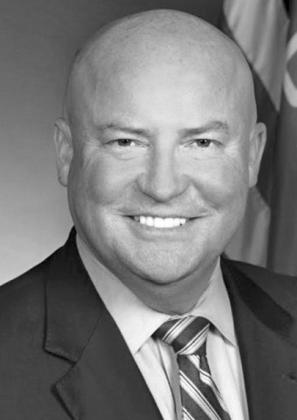Part 1 of 3
OKLAHOMA CITY – With the recent release of the movie The Sound of Freedom, the conversation on the horror of human trafficking is growing. The movie, a dramatization, details one individual story, but does not even come close to the tragic magnitude of this issue.
With this, and two subsequent weeks of columns, I am going to share some facts with you about human trafficking, the second largest and fastest growing criminal industry in the world behind only drug trafficking. I also want to thank Sen. Darrell Weaver, R-Moore, for requesting an interim study on this topic to review and share with lawmakers the tragedies that are occurring in Oklahoma as we work to reduce the numbers with this terrible epidemic.
Here are some important facts: · The exact number of victims is not known as statistics are hard to track. InOklahoma,theHumanTrafficking Hotline has received 3,153 contacts since its inception in 2007, mostly from calls, text messages, or online reports. The Human Trafficking Hotline has identified 887 cases of human trafficking, with 2,059 victims identified in these cases.
· The National Human Trafficking Hotline received reports of 11,500 human trafficking cases nationwide in 2019 alone. The data show that the top three states with the most human trafficking cases reported are California, Texas, and Florida.
·The three shelters certified by the Office of the Oklahoma Attorney General are The Dragonfly Home in Oklahoma City, Domestic Violence Intervention Services, Inc. (DVIS) in Tulsa, and The Spring in Sand Springs.
Clearly, there is a great need across rural Oklahoma for this support system for victims of this heinous crime. Thankfully, there are many other programs dedicated to assisting victims of sex trafficking across the state. I strongly encourage you to research to see if there is a program central to you if you are looking to support victim services.
If the victim is a minor, no force, fraud, or coercion is necessary to prove trafficking. Victims often fall into two main categories of trafficking, sex, and labor. Any youth under the age of 18 who is involved in a commercial sex act is considered a victim of trafficking.
Sex traffickers will prey on vulnerable people, especially young people, and often lure them with promises of protection, love, or adventure – something they might feel they are missing at home.
Labor trafficking includes situations of debt bondage, forced labor, and involuntary child labor. Common types of labor trafficking include people forced to work in homes as domestic servants and factory workers held in inhumane conditions with little to no pay.
Children account for half of the victims of human trafficking worldwide. In fact, the average age that a young person becomes involved in sex trafficking is 12 years old. The U.S. populations most vulnerable to human trafficking include: · Children in the child welfare and juvenile justice systems, including foster care.
·Runaway and homeless youth. ·Unaccompanied foreign national children without lawful immigration status.
·NativeAmericansandAlaskaNatives, particularly women and girls.
·Individuals with drug addictions. ·Migrant laborers, including undocumented workers and participants in visa programs for temporary workers.
·Foreign national domestic workers in diplomatic households.
-Persons with limited English proficiency; persons with disabilities.
·LGBT+ individuals. -Participants in court-ordered substance use diversion programs.
If you think you know of someone whose life or safety is in immediate danger, call 911. If you suspect someone is the victim of human trafficking, then please contact the Oklahoma Bureau of Narcotics and Dangerous Drugs Human Trafficking Hotline at (855) 617-2288.
About OICA: The Oklahoma Institute for Child Advocacy was established in 1983 by a group of citizens seeking to create a strong advocacy network that would provide a voice for the needs of children and youth in Oklahoma, particularly those in the state’scareandthosegrowingupamid poverty, violence, abuse and neglect, disparities, or other situations that put their lives and future at risk. Our mission statement: “Creating awareness, taking action, and changing policy to improve the health, safety, and wellbeing of Oklahoma’s children.

